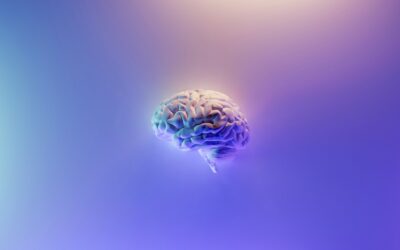Two birds, inseparable, sit on two branches of a tree, one moving around pecking, discarding, and eating fruits, and the other witnessing immobile. The first is our sensory mindful self and the other our spiritual Self, all-knowing, mindfree.
Mundaka Upanishad
Why do we feel lonely? We have cures for cancer. How come we don’t have a ‘loneliness’ pill? That would make trillions for those who scam us with ‘anxiety’ pills.
Chris Niebauer, a neuropsychologist, says that a false sense of self contributes significantly to human mental suffering. Chris cites Advaita and Buddhism to support the hypothesis that this idea of ‘self’ is an illusion. He cites neuroscience research supporting how false the interpretations of this ‘self’ can be.
In recent times, Timothy Gallwey, author of The Inner Game of Work speaks of 2 selves. The first is the judgemental, mindful, sensory, and ignorant Self 1. The other is the intuitive, disengaged, mindfree, and wise Self 2. Tim once trained me on his techniques and mentioned he was mentored by an Indian guru. In simple terms of the Upanishad, Self 1 is the sensory bird ‘self,’ while the detached ‘self’ bird is the spiritual Self 2.
Chris Niebauer evidences research on how the left brain creates incorrect, illusory, and seemingly plausible explanations for what we experience, perceive, think, and do. AI chatbots are still in this state of evolution. AI Chat has created false narratives that have put several people in soup, including a lawyer in a courtroom! What AI badly needs is a spiritual Self 2 to monitor its cognitive self.
How does this relate to mental health and this blog’s theme of loneliness?
Physical suffering such as pain from a wound or cancer is sensorily real. Even such pain has been dismissed by sages like Ramana Maharishi who said, ‘When this body itself is not mine, how can the pain be?’ For most of us, it is. However, anxiety based on fear of rejection, invalidation, and other such factors are creations of our left brain. Some of them may be caused by a shortage or excess of neurochemicals, but many of them are perceptional based on traumatic memories that won’t go away.
Osho, a philosopher I admire for his genius though not for his actions, said, ‘99% of your anxiety is illusory. The 1% that is not, is good for you.’ The problem is in finding that 1%.
It is now official from the US Surgeon General that loneliness as a mental ill health factor affects a majority of adults in the United States. This is likely to be true globally. Dr Varun Soni, Dean of Religious Studies at the University of Southern California overseeing the emotional and spiritual health of 100,000 young people in USC and other institutions, echoed this sentiment. In a recent conversation with me, he said that a majority of youth in the age group of 18~25 have serious problems arising out of loneliness. Therapy and counseling have been unable to cope with this problem. We spoke about coaching as a solution. We shall address coaching loneliness in a future blog in detail.
In this blog, I would like to expand on the Vedic viewpoint on the difference between aloneness and loneliness. Aloneness is good for us. It’s a meditative, disengaged state in which we become objective. One can be alone in the midst of a hundred or more people in a blissful state. We control our sensory impulses. We restrain our expectations. We are mindfree in a witnessing state of knowing intuitively that acceptance leads to happiness.
Loneliness on the other hand is subjective. It’s created by the mind. To be specific, the left cognitive brain, which is driven by sensory data interpreted through negative trauma experiences. Soni says that with dissolving family and religious moorings, Gen Z is disconnected. Loneliness is a preferred way of life, perhaps with the destructive potential of social media in invalidation. Unfortunately, the social media effect is not going away any time soon. The current population of all generations has far less belief in religion and family than some decades earlier.
The million-dollar question is, ‘Who would a young person trust’ if they do not trust themselves? If they need to trust and love themselves, what needs to change? Who do they need to relate to and trust? How can they create a sense of purpose? These are existential questions that relate to how these young people can discover their spiritual selves.
None of these young people want to be lonely and unhappy. They don’t deserve to be. What they need to see is an emerging future of hope that resonates, one that they can discover themselves. This is the future our emerging generations deserve.
Reflection
- As an older person, what can you do to help your younger generation discover their self?



